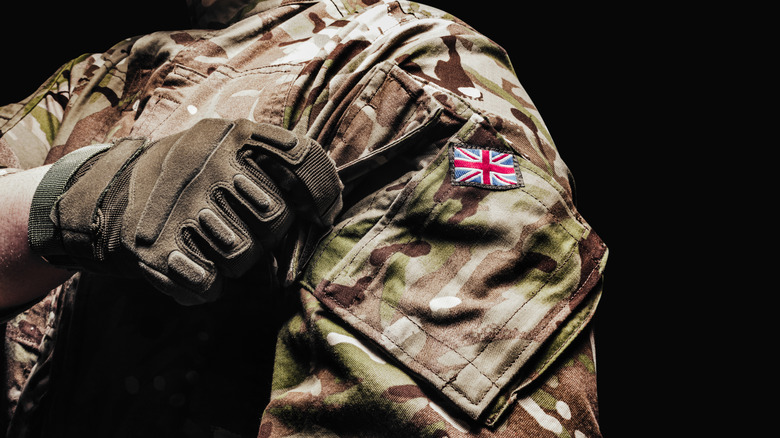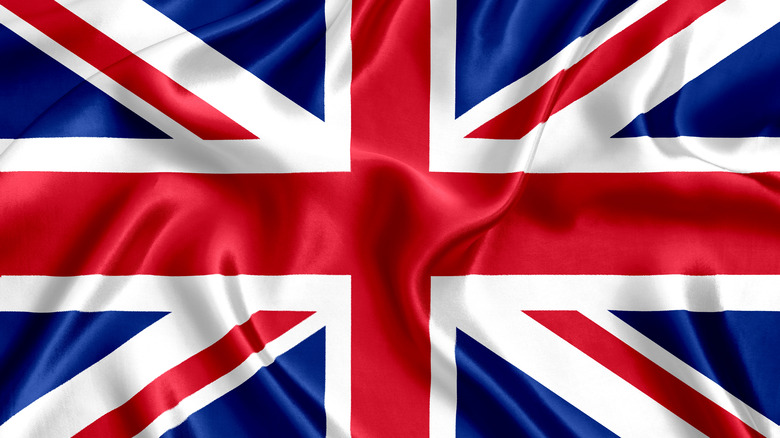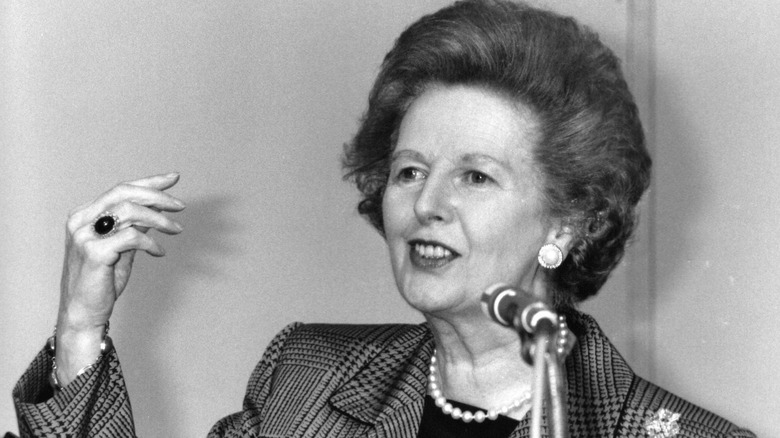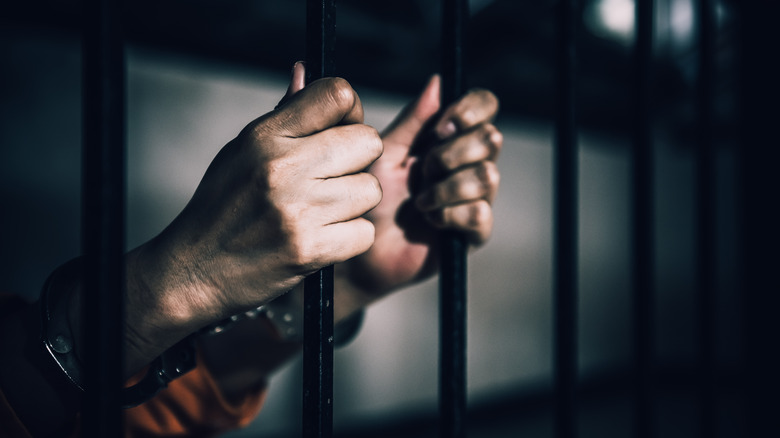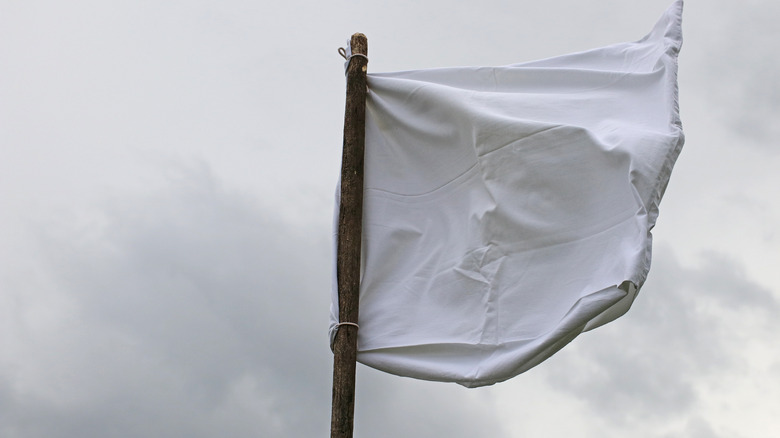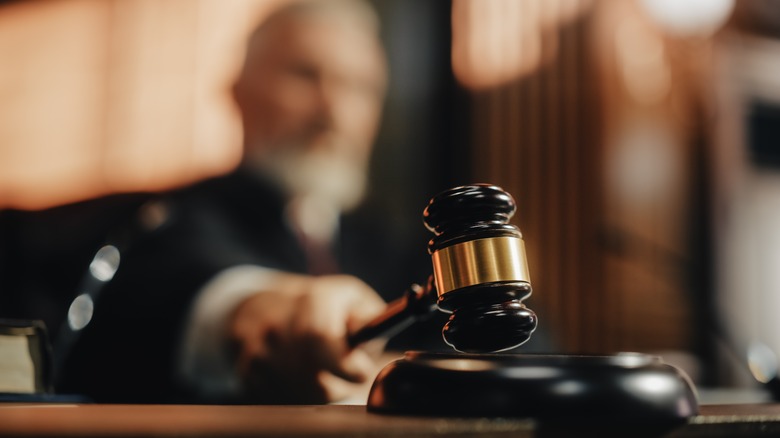The Tragic Story Behind Operation Nimrod
On April 30, 1980, six terrorists stormed the Iranian Embassy in London, England. What followed was Operation Nimrod, a team of SAS soldiers who were tasked with infiltrating the embassy and rescuing hostages. The six terrorists claimed to be part of a group known as the Democratic Revolutionary Front for Arabistan, protesting Ayatollah Khomeini, the leader of Iran who had come to power in just the last year (via BBC News).
Operation Nimrod had only two goals: stop the terrorists and rescue the hostages. What followed next was a successful siege with minimal hostage casualties. However, controversy arose over the killings of five of the terrorists. Conflicting accounts and assumptions were made after the fact, leading to arguments about whether the SAS soldiers had wrongfully killed terrorists that had allegedly surrendered (via The Guardian). This multi-day hostage scenario was broadcast live by news reporters outside the building, allowing the public to anxiously follow along as the SAS team attempted to infiltrate the building.
The public view of the government was unfavorable
In the decade leading up to the Iranian Embassy attack, the West had suffered several losses. First was the killing of Israeli athletes by Palestinian terrorists during the 1972 Munich Olympics. This was the result of a failed police attack that turned a hostage situation into a bloodbath. In 1979, Operation Eagle Claw was aborted due to faulty helicopters, resulting in eight U.S. servicemen dead and none of 66 total hostages rescued during the initial attempt (via Forces Net). This event would become one of former President Jimmy Carter's biggest regrets.
Needless to say, the public was beginning to doubt their governments and military. As Gregory Fremont-Barnes states in his book "Who Dares Wins: The SAS and the Iranian Embassy Siege 1980," "security organizations discovered that, paradoxically, the public tended to view the government and not the hostage-takers with disapprobation if the crisis ended in violence." This made the success of Operation Nimrod crucial in keeping morale high among British citizens.
There was some miscommunication
Members of SAS were under the impression that then-prime minister Margaret Thatcher, had told them not to take any prisoners (via The Guardian). One of the team members, Tom, stated in the BBC documentary "SAS – Embassy Siege" that the SAS team was given a message from Mrs. Thatcher in their final briefing. "The message was that we had to resolve the situation and there was to be no chance of failure... She didn't want there to be a problem beyond the embassy."
The team took this message seriously, interpreting it as Margaret Thatcher telling them to take no prisoners. As Tom stated, "we took [the message] to mean that they did not want anybody coming out alive." Unfortunately, the team would not make it in time before the terrorists began threatening hostages, resulting in two being killed (via BBC News).
Two hostages were killed before SAS could infiltrate
On May 5th, 1980, Abbas Lavasani was shot and killed by the terrorists. He was a press spokesman for the Iranian government and was one of the hostages in the Iranian Embassy (via Forces Net). It was at this point that the SAS team rushed in, as the terrorists were threatening to kill more hostages.
During the infiltration, another hostage was killed and two more were injured. Meanwhile on the first floor, a fight between an SAS member and a terrorist ended broke out, resulting in the terrorist being shot. While SAS was evacuating the hostages, one of the terrorists threatened to set off a grenade. He was gunned down by SAS before he could set it off (via National Army Museum). When asked for details on the killing, an SAS team member stated in an interview, "He had a hand grenade. We shot him. That was it, end of story."
The counteroperation team shot two of the terrorists
According to Ahmad Dadgar, a staff member at the embassy, he and other hostages convinced two of the terrorists to surrender (via The Guardian). He stated that, "both were sitting there and put their hands on their own heads. Then several SAS men came in. And then they took the two terrorists and pushed them on a wall and shot them." This was confirmed by two other witnesses during the filming the BBC documentary "SAS – Embassy Siege."
Because the SAS team believed that they had been told by then-prime minister Thatcher to take no hostages, they did not plan for any of the terrorists to surrender. One member of the SAS team, Robin Horsfall, stated during an interview in the BBC documentary, "we didn't want them to surrender, we wanted them to stay there so we could go in and hit them."
It was ruled that the soldiers had used reasonable force
The killing of the two terrorists that had allegedly surrendered became incredibly controversial after the siege. In Gregory Fremont-Barnes' book "Who Dares Wins: The SAS and the Iranian Embassy Siege 1980," he claims that the terrorists only stopping killing hostages because they were trying to hide amongst them (via Forces Net). The only surviving terrorist and the terrorist that was shot after holding up a grenade had been hiding among the hostages, so this story seems plausible, but somewhat contradicts the account given by hostage Ahmad Dadgar.
While the details of the killings were argued for some time, an inquest later found that the SAS soldiers had used reasonable force in the killings of all five of the terrorists. This came after the coroner's verdict of a justifiable homicide (via The Guardian). Margaret Thatcher, caught up in her own controversies as prime minister, personally congratulated the SAS team. While many criticized the SAS soldiers, many more praised them for managing to free all hostages with less injuries and deaths than expected.
